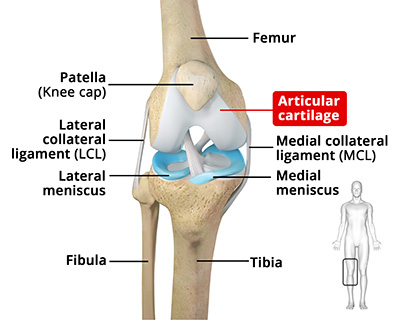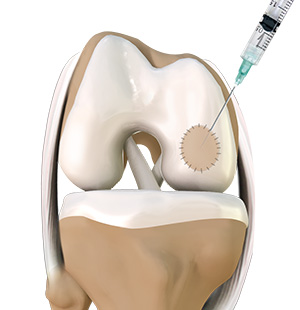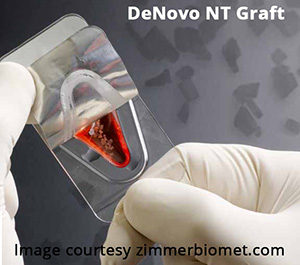Cartilage Repair
What is Cartilage Repair?
The articular surfaces of the body’s joints are lined by hyaline cartilage, a smooth tissue that serves as a shock absorber and allows easy movement of the bones within the joint. Normal wear-and-tear or injury can damage and cause defects in the cartilage, resulting in irregular articular surfaces that interfere with movement, causing pain, swelling and disability. Cartilage cell transplantation is a technique of transplanting healthy cartilage cells to replace damaged cartilage cells. These procedures are recommended for young individuals with a single articular defect. It is usually performed on the knee joint but may also be used to treat the shoulder and ankle joints.
 Autologous chondrocyte implantation (ACI) involves the removal of cartilage cells from your own body. The procedure is accomplished in 2 stages. The initial stage is an arthroscopic procedure where healthy cartilage is harvested from a non-weight bearing joint of your own body and sent to the laboratory, where the cartilage cells are extracted and cultured (multiplied) for a period of 3 to 5 weeks. In the next stage, an open surgery (arthrotomy) is performed where the dead joint tissue is removed and the defect prepared appropriately. A piece of membrane called periosteum that lines bone surfaces is obtained, usually from the tibia, and sewn over the defect and sealed with glue. Your doctor then injects the cartilage cells under the membrane into the defect where they grow and mature to form new cartilage.
Autologous chondrocyte implantation (ACI) involves the removal of cartilage cells from your own body. The procedure is accomplished in 2 stages. The initial stage is an arthroscopic procedure where healthy cartilage is harvested from a non-weight bearing joint of your own body and sent to the laboratory, where the cartilage cells are extracted and cultured (multiplied) for a period of 3 to 5 weeks. In the next stage, an open surgery (arthrotomy) is performed where the dead joint tissue is removed and the defect prepared appropriately. A piece of membrane called periosteum that lines bone surfaces is obtained, usually from the tibia, and sewn over the defect and sealed with glue. Your doctor then injects the cartilage cells under the membrane into the defect where they grow and mature to form new cartilage.
Other variants of cartilage cell transplantation include the DeNovo graft and BioCartilage, which use pre-prepared human cartilage graft material. These procedures can be performed in one stage as they do not require harvesting of healthy cartilage tissue.
 The DeNovo graft consists of pieces of viable cartilage in a storage media. Similar to ACI, the damaged cartilage area is prepared and sized. The graft is then prepared with a fibrin sealant and placed on the defect. The sealant precludes the need of a periosteal membrane.
The DeNovo graft consists of pieces of viable cartilage in a storage media. Similar to ACI, the damaged cartilage area is prepared and sized. The graft is then prepared with a fibrin sealant and placed on the defect. The sealant precludes the need of a periosteal membrane.
BioCartilage consists of dehydrated cartilage, which is introduced along with platelet-rich plasma (concentrated blood component, which enhances healing) on the defects after a technique called microfracture is performed. Microfracture involves the creation of multiple holes at the damaged site to introduce blood supply and stimulate new cartilage to grow. The BioCartilage and platelet-rich plasma further promote cell growth and healing.








